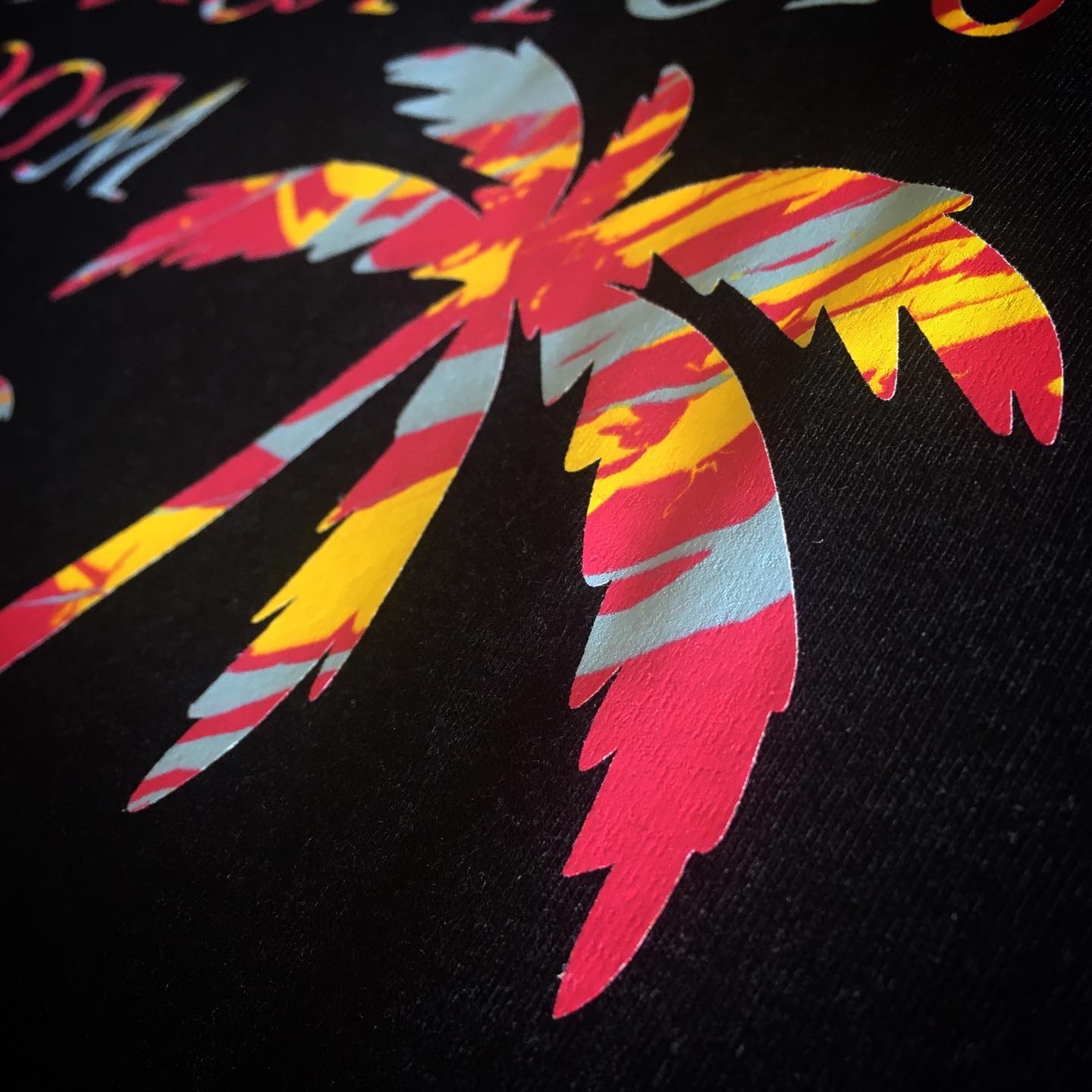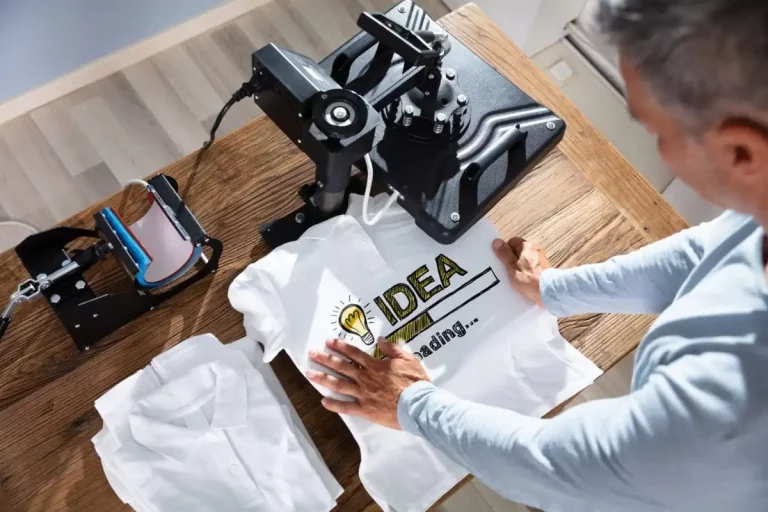Vintage Style Silk Screen Printing for Retro Fashion
Vintage Style Silk Screen Printing for Retro Fashion
Blog Article
Screen Printing Uncovered: Whatever You Required to Learn About Tee and Garment Printing Strategies
If you've ever asked yourself how those lively layouts end up on your preferred tees, you're in the ideal area. Display printing is a fascinating method that integrates art with strategy, offering countless possibilities for imagination. Recognizing the principles, from equipment to ink options, can considerably influence your outcomes. Ready to discover the essential aspects that make screen publishing an art type? Let's reveal the information that can boost your tasks.
The Basics of Screen Printing: Just How It Works
When you plunge right into screen printing, you'll discover it's both an art and a scientific research. At its core, display printing involves producing a pattern, or screen, that permits ink to go through only in specific locations (screen printing kit). You begin by selecting your design and preparing your screen with a light-sensitive solution. As soon as you reveal this solution to light, it solidifies, leaving your style as an unfavorable space.
Following, you'll mix your inks and prepare your printing surface area. Placement the screen over the material, after that make use of a squeegee to press ink through the display onto the garment. This procedure requires accuracy, as you desire clear, vivid prints. After printing, you'll cure the ink with warm, guaranteeing it sticks to the textile and lasts through cleans. Each action is important, and mastering them will certainly raise your display printing skills, changing simple garments into unique, meaningful pieces.
Sorts Of Display Printing Strategies
As soon as you grasp the fundamentals of display printing, it's time to check out the different methods that can raise your designs. One prominent technique is conventional screen printing, where ink is pressed with a stenciled screen.
If you're going for great information, think about discharge printing. This strategy removes color from the material, leaving a soft, classic look. An additional choice is plastisol printing, known for its sturdiness and vivid shades, making it a preferred for numerous brand names. Lastly, trying out halftone printing to produce slope results and intricate styles. Each strategy has its special beauty, so do not be reluctant to try them bent on find what suits your design best!
Necessary Devices for Screen Printing
To achieve magnificent cause screen printing, having the best equipment is fundamental. First, you'll require a sturdy display printing frame, which holds the mesh that moves your layout onto the garment. Next, invest in premium mops; these are vital for using ink evenly across the display. You'll likewise need a great direct exposure system to develop your screens, as well as a washout cubicle for cleansing them after use. A dependable warmth source, like a conveyor clothes dryer or warmth press, is important for treating your prints to guarantee durability. Do not neglect a proper work space, geared up with tables and storage space for your products. Ultimately, safety gear, such as handwear covers and masks, will certainly maintain you safe from chemicals and inks. With the right tools, you'll be well on your method to creating professional-quality prints.
Choosing the Right Inks and Products
When selecting inks and materials for display printing, you require to take right into account the sort of ink that functions best for your task. Think of material compatibility to guarantee your styles look last and fantastic lengthy. Explore environment-friendly ink options to make your printing procedure extra sustainable.
Kinds Of Screen Inks
Selecting the best display ink is essential for attaining vibrant, durable prints that fulfill your job's requirements. There are several kinds of display inks to analyze. Specialized inks, such as glow-in-the-dark or metallic, can include unique impacts to your styles.

Fabric Compatibility Considerations
Understanding fabric compatibility is important for accomplishing high-quality screen prints, particularly since different products respond uniquely to different inks. When selecting inks, consider the fabric kind-- cotton, polyester, or blends. For cotton, water-based inks function well, using softness and breathability. Polyester, on the other hand, frequently calls for plastisol inks for far better attachment and vibrant colors. If you're printing on blends, you may require to make use of a combination of both kinds. Always test your inks on example textile to assure they stick effectively and maintain color honesty. In addition, remember that fabric weight and texture can affect the last end result, so selecting the appropriate ink and material combination is important for your task's success.
Eco-Friendly Ink Options
Environmentally friendly inks are coming to be a preferred choice for screen printers who intend to decrease their environmental impact while maintaining top quality. When choosing inks, consider water-based inks, which are less unsafe and simpler to cleanse up contrasted to typical solvents. These inks bond well with textiles, providing vibrant outcomes without hazardous chemicals. You may also discover eco-solvent inks that make use of fewer unpredictable organic compounds (VOCs), making them a more secure alternative for both your health and wellness and the earth.
Furthermore, seek inks made from renewable energies, such as soy or vegetable-based choices. By choosing the best inks and materials, you'll not only create magnificent designs however likewise add to a much more sustainable printing process. Make the button, and your prints will certainly reflect your dedication to the environment!
Preparing Your Style for Screen Printing

File Layout Demands
To ensure your layout looks sharp and vibrant on material, you'll require to pay attention to submit style demands for display printing. Begin with vector files like AI or EPS, as they can be scaled without shedding top quality. If you use raster photos, choose high-resolution data, such as TIFF or PNG, preferably at 300 DPI. Avoid making use of JPEGs, as they can shed clearness when resized. Likewise, see to it your style has a transparent background to avoid unwanted white edges on your prints. Keep shade settings in mind; CMYK is standard for screen printing, so convert your RGB creates as necessary - screen printing kit. By following these guidelines, you'll establish your artwork up for an effective print.
Shade Separation Techniques
Color separation is a vital action in preparing your design for display printing, and understanding it can substantially boost your print high quality. You'll require to break your design into private colors, as each shade calls for a different display during printing. This precision not only guarantees exact color depiction but also streamlines the printing procedure.
Resolution and Size
Accomplishing the finest results in display printing starts with assuring your style has the appropriate resolution and dimension. Preferably, your artwork ought to be at the very least 300 DPI (dots per inch) for sharp, clear prints. Your last product might look pixelated and amateur. if you use reduced resolution.
When it pertains to size, consider the dimensions of your print area. Design your artwork to match the final print dimension, preferably creating it in the real dimensions you'll be publishing. By doing this, you'll prevent any kind of unexpected scaling concerns.
Always check your layout in both vector and raster formats. Vector graphics webpage can be scaled without losing top quality, making them suitable for screen printing. Preparing correctly will ensure your layout looks fantastic on every garment!
Step-by-Step Screen Printing Process
Screen printing is a vibrant process that permits you to produce lively designs on numerous surfaces. To start, you'll need a screen, emulsion, and your picked ink. First, prepare your display by cleansing it completely. Next off, use the solution uniformly and allow it dry in a dark location. When completely dry, subject your display to light with your layout put on it, which will certainly solidify the solution where the light hits, producing a pattern - screen printing kit.
Put ink onto the screen and make use of a squeegee to push the ink via the pattern onto the textile. Raise the screen thoroughly and let the print dry. You have actually efficiently screen printed your layout.
Tips for Successful Screen Printing Projects
While you're diving into your screen printing tasks, keep in mind that preparation is crucial to success. Begin by gathering all your products-- inks, mops, screens, and garments. A tidy work space aids protect against undesirable errors, so clean up prior to you begin.
Following, validate your art work is high-resolution and correctly sized for your garment. Evaluate your screen for appropriate direct exposure and clean it thoroughly to stay clear of smudges. When mixing your inks, adhere to the maker's guidelines to attain the ideal uniformity.
During printing, apply also pressure with your squeegee for constant results. Don't hurry; take your time to confirm each print fulfills your requirements. After printing, let your garments completely dry totally prior to handling or packaging them.
Last but not least, always maintain a sample of your benefit future recommendation. In this manner, you can analyze your progression and improve your techniques gradually. Happy printing!

Regularly Asked Questions
How much time Does It Require To Establish a Display Printing Task?
Establishing a screen printing job generally takes about 30 minutes to an hour. You'll prepare the displays, mix inks, and change the press. The time differs based upon intricacy and experience, so stay arranged!
Can I Print on Various Material Enters Utilizing the Exact Same Method?
Yes, you can publish on various textile kinds making use of the very same strategy, however you'll require to readjust your inks and setups. Some materials soak up ink differently, so trying out warranties the recommended you read very best results for each material.
What Are Usual Blunders to Avoid in Display Printing?
When screen printing, prevent common mistakes like using the incorrect ink, neglecting proper exposure times, or avoiding pre-press checks. Constantly examine your arrangement and preserve tidy displays to assure top quality results each time.
Just How Can I Appropriately Clean and Maintain My Screen Printing Equipment?
To appropriately tidy and preserve your display printing tools, you should frequently wash displays with proper solvents, check mops for wear, and assure all tools are stored completely dry and dust-free. Uniformity prevents expensive repair services and improves performance.
Is Display Printing Eco Pleasant Contrasted to Various Other Techniques?
Display printing can be much more eco-friendly than other methods, specifically if you use eco-conscious materials and water-based inks. By selecting sustainable supplies and methods, you lower waste and minimize your effect on the world.
Display Printing Uncovered: Whatever You Need to Know Regarding Tee Shirt and Garment Printing Strategies
At its core, display printing entails producing a pattern, or display, that allows ink to pass via only in particular locations. Setting the display over the material, then utilize a squeegee to push ink with the screen onto the garment. One prominent technique is conventional display printing, where ink is pushed via a stenciled display.When choosing inks and materials for display printing, you require to take into account the kind of ink that functions best for your project.
Report this page